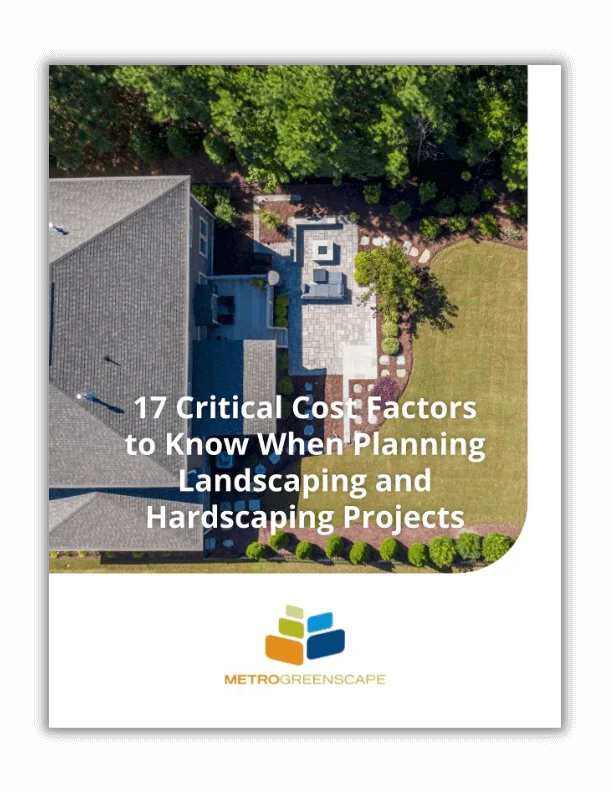Spring and fall remain full of landscaping tasks, but there are plenty of ways to spruce up your lawn and garden as the summer ends. Check out these easy and effective end of summer landscaping tips, designed to extend the season and keep your outdoor living area healthy and comfortable.
Water What You Can
Watering your lawn and garden can be problematic, depending on local limitations. Use your rain barrel to keep containers and hanging baskets moist, and consider watering the grass weekly when rain is scarce. About 1-inch of water is all that your lawn needs to push through the dog days of summer.
Deadhead and Harvesting
Deadhead your flowers to encourage growth and maintain a neat appearance. Annuals like petunias and pansies take just a few minutes to deadhead, while other annuals and many perennials require cutting. Cut flowers provide fresh, fragrant blooms for the interior of your home, and help to direct energy and nutrients toward growth.
At this time of year a large selection of hearty vegetables is just beginning to flourish in your garden. Make room where necessary by cleaning up early crops and get ready to harvest pumpkins, squash, potatoes and corn. Many of these vegetables can be canned for the winter, and staying on top of the harvest helps to keep your landscape manageable.
Start Light Pruning
Most plants require pruning in early spring and mid-winter, but summer provides a good opportunity for light pruning. Trimming roses helps to promote an additional series of blooms, and many flowering shrubs and trees could use a quick pruning at this time.
Be sure your pruners are clean and sharpened; otherwise you risk harming vulnerable plants. Always clean your tools after dealing with diseased plants, and keep the blades free from debris and sap.
Repair Pet Damage
Pets can do a number on your landscape. From digging holes to marking their territory, chewing plants and knocking over containers, your furry friends often leave a mess in summertime. Get the yard cleaned up and repaired by filling those holes, patching up the grass and gardens and securing your containers, furniture and garden structures.
This is also a good time of year to consider building a fence or repairing an existing fence. Contractors often experience a slowdown in August, before picking up again in September. Talk to your local contractor about fixing up gaps, replacing worn or broken sections and securing gates to help maintain a safe, comfortable outdoor play area for your pets.
Overseed Where Necessary
Fix bare patches on your lawn by overseeding or applying a grass repair kit. Usually a mixture of sand, grass seed and a slow release fertilizer, these repair kits work wonders on dead spots.
Did you set up a kiddy pool or temporary gazebo? Chances are that the grass underneath has died over the summer and needs a boost to bounce back. Keep this area evenly moistened until the new seeds root and try to redirect traffic wherever possible.
Service Your Lawnmower
Grass cutting duties tend to slow down in the heat of summer, but as temperatures drop and rain falls again your lawn will need attention. Be ready by servicing your lawnmower now. A seasonal lawnmower service includes blade sharpening, an oil change and spark plug inspection, depending on what type of lawnmower you own (electric, gas or manual).
Take the time to service other essential landscaping tools, such as your trimmer (a new string or wire helps to chop down pesky weeds and keep the edges neat), pruners (oil joints and disinfect blades) and shovels (clean the blade and inspect handles for cracks and weak points).
Choose Bulbs
Start thinking about which bulbs you would like to plant this fall, providing excellent color the following spring. It pays to think ahead and plan, allowing you to act quickly in early winter just as bulb-planting season begins.
Start Late Summer Seedlings
Adventurous gardeners will find a wide selection of seeds to sow in late summer, including wildflowers and late annuals like icicle pansies. Investigate which flowers should be seeded now, ready for planting out in fall. Some can be sown directly into the garden with adequate watering, while others need to be established inside.
Keep an Eye Out for Pests
Many pests hit your landscape in spring, only to disappear as the summer heat rises. Others become established and enjoy the summer as much as we do, reeking havoc in your gardens and throughout the grass.
Tackle grubs and other lawn pests with organic solutions and safe pesticides. Grub control this year often leads to fewer pests next year, so think long term and do the hard work now. Get a handle on flying pests like Japanese beetles and red lily beetles with traps, insecticidal soaps and other pest solutions.
Rest and Relax
The most important end of summer task is to relax. Make the most of every warm moment left by spending time with your family and friends outdoors. Keep your landscape tidy, attractive and comfortable by following these landscaping tips, but remember to schedule time for rest. Hang out in the backyard, by the pool or in the garden to enjoy the fruits of your labor.
Stay on top of your outdoor tasks by tackling these end of summer landscaping tips. Be sure to stay hydrated with plenty of fresh water and get started early in the morning to avoid the high heat of the day. Your lawn and garden will look great and prosper when these simple, yet vital tasks are taken care of.








